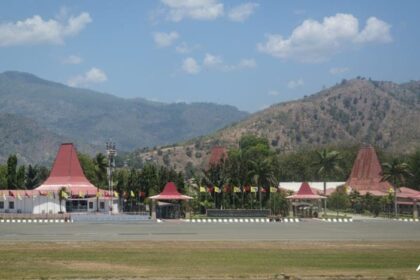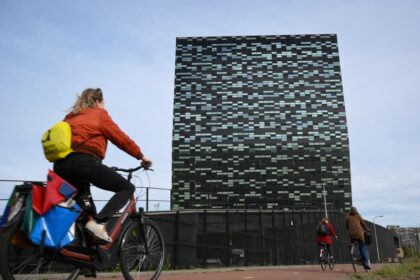Mixue recalibrates in Vietnam and Indonesia
Mixue, the Chinese beverage giant known for low priced milk tea and ice cream, has closed a number of underperforming outlets in Vietnam and Indonesia for the first time while reporting strong profit growth. The company said the closures are part of a move to improve efficiency and optimize its store network, a signal that the chain is pruning weaker locations rather than pulling back from key Southeast Asian markets.
The decision arrived alongside upbeat financials. Mixue posted net profit of CNY 2.72 billion in the first half of 2025, up 44 percent year on year, on revenue of CNY 14.87 billion, up 39 percent. The company operates mostly through franchising, and its scale has expanded rapidly in recent years in China and abroad, supported by a tightly managed supply chain and a menu built around high volume, low price items.
By the end of June 2025, Mixue operated more than 4,700 outlets outside China, a figure that was 162 lower than at the end of 2024 as some stores in Vietnam and Indonesia were closed or relocated. Those two countries remain the company’s largest overseas markets by store base. In earlier disclosures, Mixue said it had around 48,300 stores in China. The brand’s global footprint has accelerated since late 2024: research tracking shows Mixue moved from 45,302 outlets as of September 2024 to more than 53,000 worldwide by mid 2025.
Vietnam has been a pillar of that push. Momentum Works data cited in industry reports placed Vietnam’s Mixue store count at about 1,304 as of September 2024, second only to Indonesia’s 2,667 among markets outside China. The chain’s appeal in Vietnam rests on aggressive pricing, with lemonade, milk tea and fruit tea typically offered at around VND 10,000 to 30,000, targeting value seeking students and young workers and driving high transaction frequency.
By the numbers
Mixue’s growth has been underpinned by supply efficiencies that helped the company hold a gross margin near the low 30 percent range in the first half of 2025 despite input cost fluctuations. Overseas, it ran 4,733 stores in mid 2025, with the trims in Vietnam and Indonesia reflecting a refinement of its network rather than a retreat from Southeast Asia. The brand continues to report billions of cups of beverages sold annually across its system, a function of its low price, high volume model.
What triggered the closures?
Executives framed the shutdowns and relocations in Vietnam and Indonesia as a performance driven adjustment. Shops with weak footfall or heavy overlap with nearby Mixue outlets were the main targets. The aim is to reduce cannibalization, lift average unit sales and improve franchisee returns in each trade area.
Several market realities sit behind the move. In dense urban corridors, Mixue’s rapid rollout created clusters where stores competed for the same price sensitive customers. Rising rents, higher wages and variable delivery platform fees can squeeze thin margins at low volume locations. Some sites also suffer from suboptimal visibility or limited seating, which matters in Vietnam where milk tea is a social occasion as much as a grab and go drink. The closures and relocations are designed to address these issues and to shift resources to better performing streets and neighborhoods.
Inside Mixue’s franchise economics
Mixue’s international expansion is built on franchising. Franchisees pay for equipment and buy company approved ingredients and packaging. The parent company earns a significant share of revenue from that supply system, which allows the brand to keep menu prices low while maintaining consistency. For franchisees, success depends on high traffic and fast turnover, since margins per cup are slim.
Tensions in Vietnam came into view in late 2023 when groups of franchisees gathered in Hanoi to protest retail price cuts that they said were difficult to absorb. The company lowered shelf prices by roughly 25 percent to capture more market share while trimming raw material prices by about 8 to 10 percent. Several franchisees argued this left a short term gap that could translate to losses of 15 to 17 percent once rent, labor and utilities were factored in. Complaints also touched on store density and weak protection from direct competition between nearby franchise locations. Those disputes did not stop the chain’s growth, but they highlighted how sensitive unit level economics can be in a low price model.
Against that backdrop, pruning underperforming stores and relocating others is designed to ease internal competition and improve the earnings profile of the network in Vietnam. It also signals to franchisees that the company is willing to adjust the map to favor healthier locations.
Strategy shift to stronger locations
Company leaders describe the current approach as a rotation from weak sites to stronger ones. Rather than closing the book on Vietnam or Indonesia, Mixue is moving outlets to streets with better visibility or to districts with denser student and office populations where the brand’s value proposition is most compelling.
Cai Weimiao, executive director and head of the frontend supply chain, described the relocation effect in recent remarks.
Some stores were replaced with new ones in different locations, which increased daily sales by more than 50%.
Location has always been the most important variable in low price beverage retail. High frequency categories with limited average ticket rely on convenience, predictable wait times and saturation near schools, transit hubs and residential districts. Mixue is also continuing to expand inside China, with a strong presence in lower tier cities and towns where rents are lower and demand for affordable drinks is steady. The quality focus now extends abroad, pairing network growth with closer monitoring of performance at the shop level.
Training, support and supply for overseas teams
To improve service and standardize operations, Mixue has been flying foreign staff to China for training since late 2024. The company also plans to open a global business support center this year. A dedicated support hub can centralize procurement, store audits, marketing playbooks and digital tools, all of which help franchisees execute consistently in fast growing markets.
Supply chain capacity is expanding too. A new production hub in Hainan has begun serving export demand for Southeast Asia, improving delivery times and lowering logistics costs for items such as syrups and powders. During the first half of 2025, falling sugar and dairy prices supported the company’s margin performance, and centralized purchasing gave Mixue an advantage in negotiating costs. These steps are aimed at keeping per cup prices low without sacrificing unit profitability.
Vietnam’s place in Mixue’s global map
Vietnam was Mixue’s first overseas market, with a store opening in Hanoi in 2018. The country has since become one of the chain’s largest international footholds by store count. As of September 2024, industry trackers put Vietnam at around 1,304 Mixue outlets, behind only Indonesia among overseas markets.
The reasons are straightforward. Vietnam’s big cities have a young customer base with a taste for milk tea, fruit tea and soft serve. Price sensitivity is high for daily indulgences, and Mixue’s range at VND 10,000 to 30,000 lowers the barrier to frequent purchase. Smartphone use is widespread, making promotions and delivery easy to coordinate. The brand’s footprint stretches from premium shopping streets to neighborhood corridors and provincial towns, where rents are lower and foot traffic is steady.
Closures of weak performers are unlikely to change that basic equation. The chain is still in hundreds of locations nationwide, and training, stronger supply lines and a tighter site selection process point toward a more balanced network in the months ahead.
Rivals, reach and Mixue’s coffee bet
Mixue’s scale now rivals that of the largest global food service brands. Research published in early 2025 showed Mixue had 45,302 stores as of September 2024, ahead of McDonald’s roughly 43,000 and Starbucks at a little more than 40,000. By mid 2025, Mixue reported operating more than 53,000 locations worldwide when counting all brands. The company’s terminal sales still trail giants like Starbucks, yet its model, which relies on high volume drinks at very low prices, continues to attract heavy foot traffic.
Investors have also focused on Mixue’s coffee brand, Lucky Cup. By July 2025 it had more than 7,000 signed stores with a target of 10,000 for the year. The concept concentrates on top tier cities in China, where outlets tend to be profitable with quick returns. Lucky Cup benefits from Mixue’s ability to buy coffee beans at scale and from menu innovations such as fruit coffee that appeal to younger urban customers. The brand opened its first overseas outlet in Malaysia, a sign that Mixue intends to take its coffee play beyond China.
Internationally, Mixue continues to experiment. It opened its first store in Kazakhstan and has signaled interest in Brazil. These moves suggest the company sees room to grow even as it trims weaker sites in Southeast Asia.
Risks to monitor
Several risks hover over Mixue’s next steps in Vietnam and the region. Franchise relations are one. Price adjustments can help the brand win share, yet they can also compress margins for shop owners if supply costs, rent and wages do not move in the same direction. Clearer territory planning and stronger support on marketing, staffing and delivery platforms can help reduce conflict among nearby stores.
Regulatory exposure is another factor. Food safety enforcement and any future sugar taxes can affect pricing power and product mix. In Muslim majority markets, halal certification and compliance are essential. Brand perception matters too. Chinese consumer brands have faced periodic skepticism in parts of Southeast Asia. Any missteps on quality or labor practices could invite backlash and hurt sales. Currency swings, competition from both local players and other Chinese entrants, and the fixed costs of logistics hubs and training programs also bear watching.
What to Know
- Mixue closed underperforming outlets in Vietnam and Indonesia for the first time, part of a network optimization effort.
- First half 2025 results showed revenue of CNY 14.87 billion and net profit of CNY 2.72 billion, up 39 percent and 44 percent year on year.
- Overseas stores totaled more than 4,700 at the end of June 2025, down 162 from the end of 2024 after pruning and relocations.
- Vietnam and Indonesia remain the largest markets outside China, with Vietnam at about 1,304 stores and Indonesia at about 2,667 as of September 2024.
- Some outlets were moved to stronger locations, and the company says relocations lifted daily sales by more than 50 percent in certain cases.
- Since late 2024, Mixue has brought overseas staff to China for training and plans to launch a global business support center in 2025.
- A new Hainan production hub supports exports to Southeast Asia, helping manage costs and supply.
- Mixue’s store count has surpassed global giants by number of outlets, while terminal sales still lag leaders like Starbucks.
- Lucky Cup, Mixue’s coffee brand, has more than 7,000 signed stores and has begun to expand overseas.
- Franchisee tensions over pricing and store density in Vietnam provide context for the closures and relocations.












